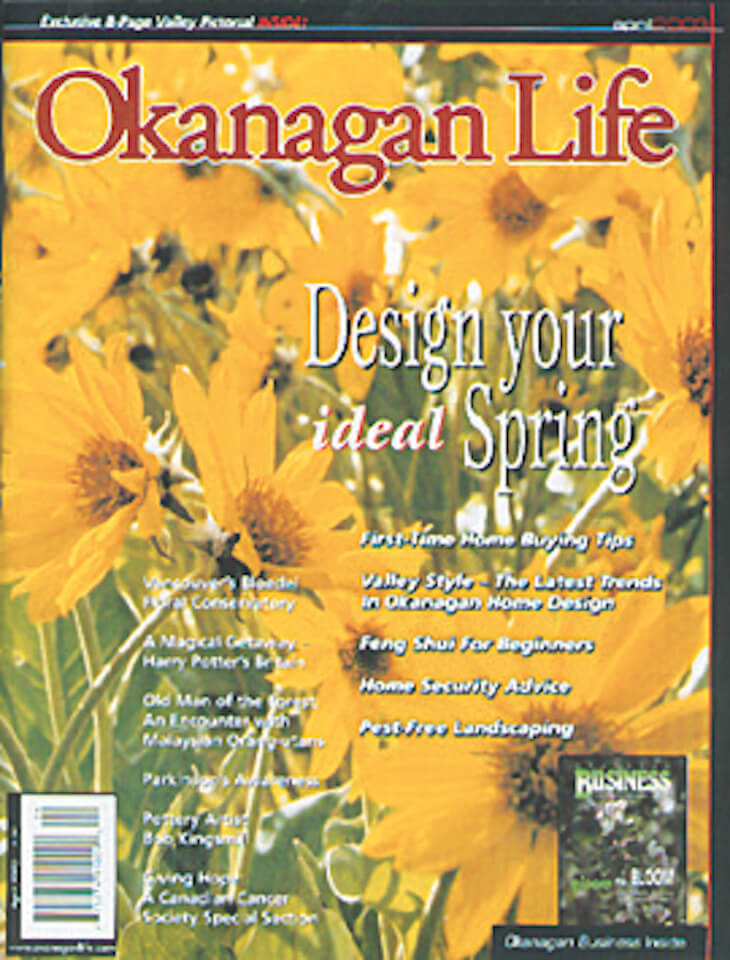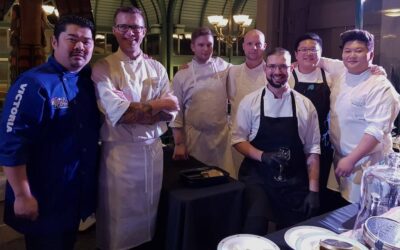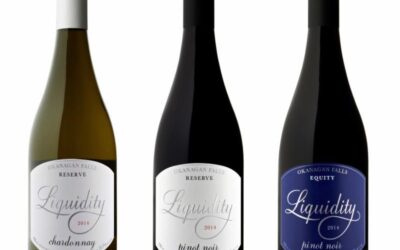So, for the new food and wine lover, here is my four-step guideline to wine appreciation.

By Dennis Dwernychuk

Mia Papodopoulos tasting at the Okanagan Life wine awards in 2016
Times are a changing! What does it tell you when the world’s largest fast food company experiences it’s first revenue loss. Perhaps North Americans are fed up (no pun intended) with animal fat-soaked artificial beef and chicken parts. We are slowly but surely taking on the health conscious Mediterranean diet; olive oil instead of butter, garlic, Provençal herbs, fresh fruit and vegetables, lean meats, and an exponential demand for red wine. More and more consumers are appreciating the satisfaction of preparing healthy meals accompanied by a robust glass of wine.
So, for the new food and wine lover, here is my four-step guideline to wine appreciation. This analysis demands an unpretentious attitude; there is no such thing as a wine expert. I have been in the business for more than 25 years, and I haven’t come across an “expert” yet. Every bit of wine knowledge you acquire makes food and wine pairing that much easier. Here goes!
First
Appearance: Make sure you have clean stemware, well rinsed, with a sufficient bowl and tapered top to allow a sample to be swirled without it being ejected onto your neighbour’s white satin dress. Premium glass manufacturers like Reidel and Villroy and Boch have several shapes and sizes for different varietals at a premium price. I have found the classic Bordeaux style to be the best overall glass shape.
Pour only one third of a glass. This will allow you to effectively swirl the wine and release the aroma components up the inside surface. Look for both colour and clarity.
The sample should be free of haze, cloudiness and surface film. Any of these conditions may indicate bacterial spoilage or other defect. Older wines should be stood up in bottle for a few days and decanted prior to serving. I decant all red wines.
Colour is observed at the far meniscus line and the centre of the bowl. Look for intensity, opaqueness, or transparency. White wines gain colour with age, while red wines loose colour with age. White wines change from yellow-greens through golden yellow to yellow-brown while red wines change from purple through purple-red to garnet to red-brown; all a function of natural reductive oxidation.
Second
Aroma: Smell is everything! Most of wine appreciation resides in your nose. Aroma is divided into:
- Primary – characteristics of a particular grape variety. Each grape has an identifiable genetic blueprint predisposing it to a set of specific aromas – Merlot vs. Cabernet Sauvignon vs. Shiraz.
- Secondary – aromas associated with alcoholic fermentation
- Tertiary – also known as bouquet, the essence derived from oak barrel and/or bottle maturation. When nosing a sample, use specific adjectives; cassis, blackberry, pineapple and so on, rather than flowery or fruity. This will develop your ability to distinguish among and between the varietals. Shiraz from British Columbia, Australia, and the Rhone Valley of France will have similar but unique characteristics as a function of soil, micro-
climate, grape growing, and wine making techniques specific to each region.
Third
Taste: Your tongue is divided into four main receptor areas. The front detects sweet, the sides acidity – what many call sour, salt is tasted over the entire surface, and bitter at the back.
That’s it. What you perceive as flavour is a combination of these four areas plus a retro-nasal effect.
Tactile sensations of weight and body are primarily due to the effects of alcohol; increases in the alcohol content increase your perception of sweetness, glycerol, tannin; the drying effect over the entire mouth surface, and residual sugar.
White wines should be “balanced” between the perceptions of sweetness and acidity while red wines are balanced among sweet, acid, and tannin for any given level of flavour perception.
Fourth
Finish: the perceived persistence of flavour after swallowing. This perception should be consistent with the aroma and flavour intensity. The longer the better! A totally balanced wine possesses integration and equivalent intensity between aroma, taste, and finish.
Make notes on the attributes you appreciate in particular wines. Remember wine tasting is subjective, what you appreciate will be different from what I like. The differences are a function of our tasting and smelling experiences throughout our lives. The main thing is to have fun.
Finally, two service tips.
- Chill white wines only one hour prior to serving. Your palate’s ability to perceive detail in wine is a function of molecular size. The colder the sample the more difficult it is to sense the full extent of a white wine’s character.
- Decant all red wines. This will release the aroma and flavour components. I constantly hear people comment that the wine was better when the bottle was almost empty. Removing the cork to let a wine “breathe” is a
fallacy; only the top inch of wine benefits.
Now get out there, gather some friends and do a blind tasting. What a great way to learn about this growing lifestyle. Cheers!
Read more of the original stories celebrated in our 30th-anniversary issue.
Winter economics: when the weather turns cold, business stays hot
In the Okanagan, we make hay when the sun shines and when the snow falls. The Valley is well known as a four-season playground; perhaps less known, it’s also a four-season economy. Key industries fire on all four cylinders throughout spring, summer, fall and winter.
Okanagan Symphony Orchestra presents Viva L’Italia with Jens Lindemann
The Okanagan Symphony Orchestra is presented Viva L’Italia this February. The concert will feature music from Italy, from baroque concertos, inspired by dances, to the drama of opera, to the grandeur of the landscape. Three performance take place: Kelowna Community...
Feature: Okanagan POTibilities
Cultivating the cannabis industry The business of legalizing marijuana is creating a buzz in the Okanagan. Whether you call it pot, weed or Mary Jane, cannabis becomes legal across Canada on July 1, 2018, when the federal government officially enacts Bill C-45. The...
Lake Country calls out to artists
The Lake Country Art Gallery is opening a call for submissions for their upcoming exhibit: Who are we? A visual narrative of our community. The exhibition will run March 1 to April 1. The call is open to everyone of all ages. Individual and collaborative works...
Freestyle skier to speak at UBC Okanagan athletics breakfast
Mike Shaw will talk about his devastating injury and his incredible comeback As inspirational speakers go, it doesn't get much better than this. For the 13th annual Valley First/UBC Okanagan Athletics Scholarship Breakfast, homegrown hero Mike Shaw will be the special...
Chefs arrive in Kelowna for national competition finale
The 2018 Canadian Culinary Championships (CCC) is taking place this weekend in Kelowna, February 2 and 3. Representing BC is Chef Alex Chen of Boulevard Kitchen & Oyster Bar in Vancouver. Chen took top spot in the Victoria championships. He chose to create his...








0 Comments